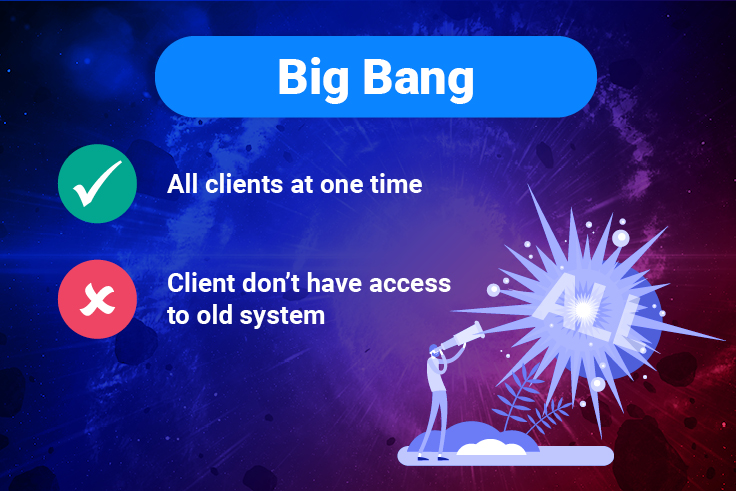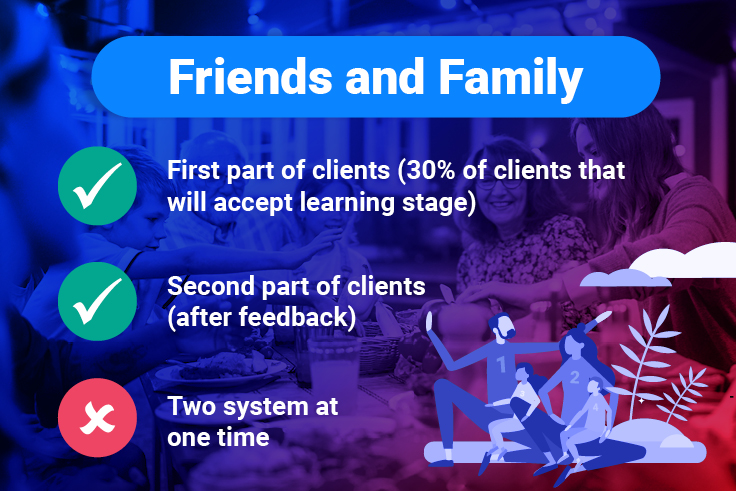Mastering Modern Factoring – Part II: Best Data Migration Strategy
- Published
- 4 min reading

In the first part of our article series, we’ve become familiar with good practices for software implementation. This time we’re presenting data migration strategies that are essential for providing seamless factoring software implementation.
For factoring companies eyeing a smooth transition, the pathway towards migrating customer data comes down to choosing between the two distinct approaches: the 'big bang' method and the 'friends and family' approach. One is a strategic great leap, the other – a meticulously planned journey. Each carries its own set of promises, challenges, and most importantly, impacts on customer experience.
Let's delve into these strategies, inspecting their nuances and implications, to uncover the route towards optimal customer data migration that not only ensures a seamless shift but also nurtures client relationships and satisfaction.
The first is a so-called big bang migration strategy
Where the transfer of all customers takes place at one time. This can be done e.g. during a weekend, so that the factor's customers can start their week with a new system. In that approach, it is crucial to provide an information campaign, a demo of the new system, and appropriate training before this procedure, so that customers who will use the new system are not taken by surprise with sudden changes.

The second strategy is a friends and family approach
Customers with whom we have successfully developed relationships are the first that we need to take care of when migrating to a new system. Many will be happy to use the new solutions, especially if they can be among the first ones to do so. Subsequent customer groups are transferred periodically in stages. What is worth mentioning here, it is very important to collect feedback from friends-and-family customers about using the new system in order to react in a timely manner before the migration is completed. In this approach, the new customers are being presented with the new system from the very beginning, since there is no point in introducing them to an old one that is soon to be replaced.

After weighing the pros and cons of both approaches to customer data migration, the friends and family method shines as the preferred choice. Its gradual, client-centric transition fosters smoother adaptation, feedback incorporation, and tailored experiences. This approach not only minimizes disruption but also underscores commitment to client satisfaction, ensuring a journey that prioritizes understanding, responsiveness, and a shared vision for the future.
In the series, we have presented some of the best practices and data migration strategies for successful factoring software implementation. Using this knowledge, financial institutions are able to collaborate with software providers in the most effective way, bringing new quality to the factoring industry, while also taking care of their customers, both old and new.